Its been a while that I'm stuck with an apparently "simple" problem. My goal is to build the envelope of a set of lines that are "attached" to a curve. Let's say a curve like this:
For the above example I would expect the envelope of lines (whose directions are depicted by arrows and are orthogonal to the edges of the red curve) to be an arc of a circle. I thought of doing this in two computationally separate ways:
- Intersection of consecutive lines: In an ideal smooth world, the envelop of lines attached is a curve where the red lines are all tangent to. Now, coming back to the discrete world I try to obtain the envelope curve by intersecting consecutive lines (for example the first line with the second line would give the first vertex of the envelope).
- Evolute of the red curve: Again in an ideal smooth world, one can think of such an envelop as the evolute of the red curve (see Evolute - wikipedia). Therefore, all I had to do in addition to current info was to compute the curvature and then build the evolute (naturally I had to use a discrete version of curvature which you can find its definition here: Discrete Curvature - wikipedia).
Doing any of the above approaches I would get the following result:

However, finding the "correct arc" is heavily dependent on the accuracy of the initial data which is the red curve. As soon as the red curve has some "noises" in the vertices the envelope is heavily distorted. Here I add a picture (where the red curve is visually intact (but not actually) yet the envelope is distorted):
My Question: How can I rectify this? I believe there should be a numerical approach to solve this issue as I badly need this envelope to be correctly built. I'm a mathematician and am not fully aware of the numerical tricks that might exist in dealing with cases like this. However, I believe that this should be a standard question in computer graphics community though I could not find anything properly relevant after searching for months.
It would be great if the solutions are in MATLAB language. Please let me know if you want me to be more accurate regarding the passage.

